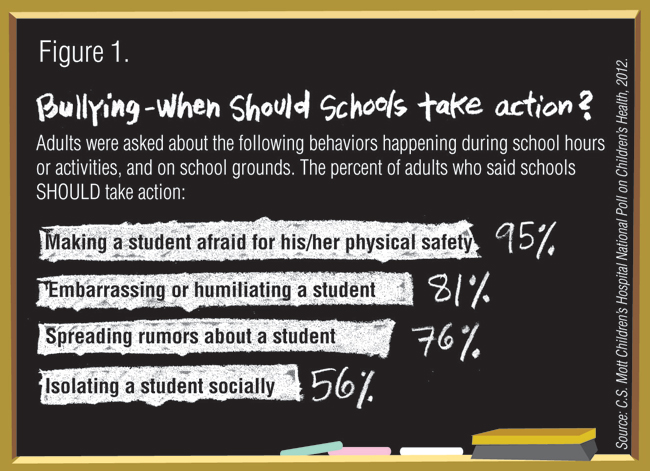Blog
How should schools respond to bullying?
Bullying is a major health concern for children and ranked number 5 overall in this year’s NPCH Report of the top 10 health issues facing kids. But many people define “bullying” in different ways and have different ideas of when and how schools should respond to bullying.
We asked adults across the country what behaviors they call “bullying” and when they think schools should get involved and take action against these behaviors. Read the full report – Bullying: When should schools take action?
View full size image | View Spanish translation | See other infographics
Although adults list bullying as one of the top 5 health concerns for kids in the U.S., this poll shows they don’t view all forms of bullying the same. While 81% of adults say schools should take action when a student embarrasses or humiliates another student, just 56% think isolating a student socially merits school action.
Persistent intentional social isolation can lead adolescents to harm themselves or others. However, nearly half of adults in the U.S. feel social isolation is not a situation where schools should intervene. This shows that it will be important for schools to communicate clearly with parents and other community members about their bullying policies and what they consider bullying. It’s also important for students to be involved in preventing bullying – by determining the way they’ll respond when they see bullying happening and how they will relate to each other about this continuing health concern.
Video: NPCH Director & Pediatrician Dr. Matthew Davis discusses bullying

